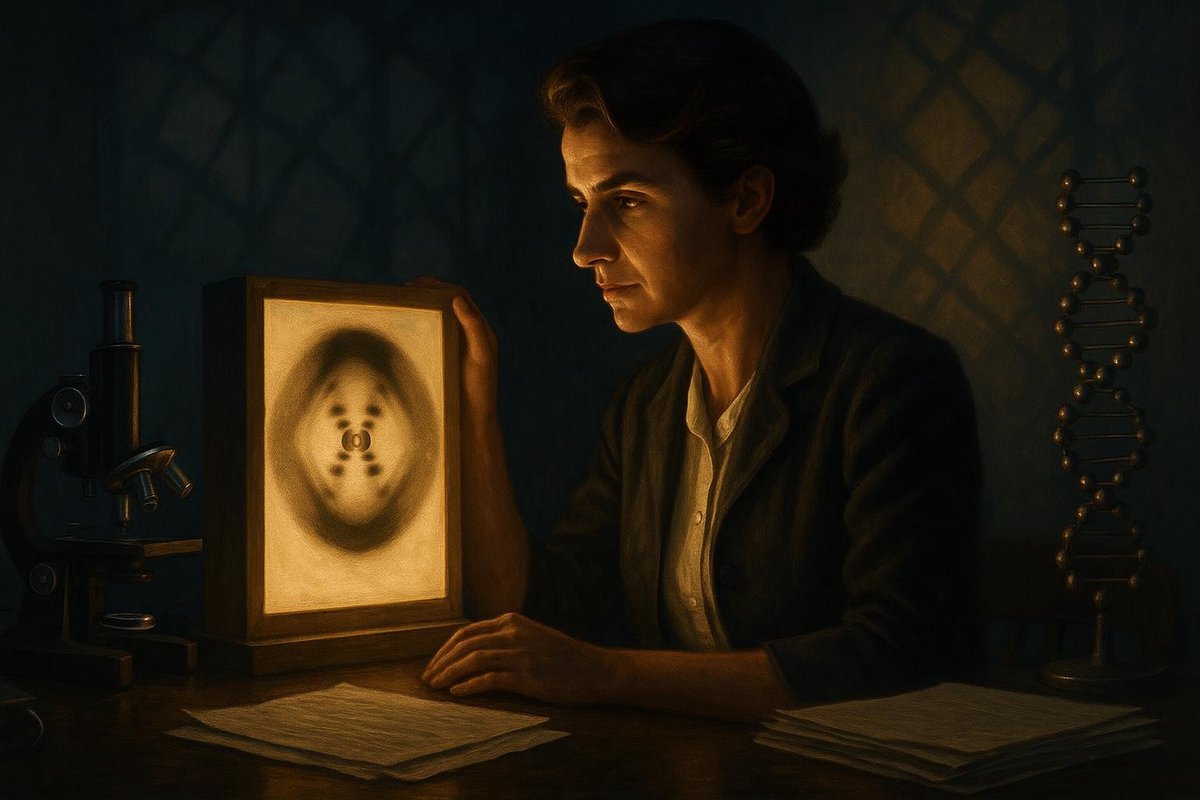
What is DNA, really? At first glance, it might seem like a simple question, but DNA is the blueprint of life, the architect behind every living organism’s structure and function. Interestingly, the path to uncovering its structure wasn’t straightforward. Unraveling DNA’s double helix was a journey that involved misunderstandings, brilliant insights, and a touch of scientific drama. The real-world implications of this journey resonate in medicine, biology, and beyond. How did we get here? Enter Rosalind Franklin and her essential contribution to the DNA story.
Unpacking the Question
The journey to understand DNA’s structure was a winding road, full of twists and turns. Before the iconic double helix model, scientists knew DNA was composed of sugar, phosphate, and four nitrogenous bases, but the specific arrangement was a mystery.
- Scientists struggled to decipher how these components fit together in a stable structure.
- Some believed DNA was a simple, repetitive molecule, while others thought it must be more complex to hold genetic information.
Enter Rosalind Franklin, who in 1951 joined King’s College London, where she used X-ray diffraction techniques to photograph DNA. Her images, especially Photo 51, revealed the density pattern of DNA, hinting at its helical structure. These images provided the critical clues Watson and Crick needed.
- Franklin’s expertise in X-ray crystallography was pivotal. She captured images that clearly showed a helical shape.
- She meticulously interpreted these images, proposing a detailed structure of DNA fibers.
Franklin’s work set the stage for Watson and Crick’s breakthrough. Her images were the missing pieces of the puzzle they were assembling.
Surprising Facts
Rosalind Franklin’s role in discovering DNA’s structure has often been overshadowed, yet her work was essential. Her contributions were instrumental, if not always acknowledged.
- Franklin’s photographs showed a helical structure that Watson and Crick could not ignore.
- Her image, Photo 51, was shown to Watson without her knowledge, sparking a major breakthrough.
Interestingly, many people believe Franklin was close to solving the structure herself, had she been given more time. Her scientific rigor and attention to detail were exemplary.
- Watson and Crick’s model, announced in 1953, relied heavily on Franklin’s data.
- Franklin’s insights into the double helix were later recognized as foundational.
In the end, the story of DNA’s discovery is a tapestry of collaboration and contention, weaving together the talents of many scientists.
What Science Says
With Franklin’s data in hand, Watson and Crick crafted the double helix model, a structure that elegantly explained how genetic information is stored and replicated.
- The double helix consists of two intertwined strands, like a twisted ladder.
- Bases pair specifically: adenine with thymine, and guanine with cytosine, ensuring precise replication.
This model answered long-standing questions about DNA’s role in heredity. It wasn’t just a structure—it was a mechanism for life’s continuity.
- Watson and Crick’s publication in Nature revolutionized biology and medicine.
- Franklin’s X-ray images were finally acknowledged for their crucial role.
As time goes on, the significance of these discoveries only grows. Understanding DNA’s structure has been pivotal in biotechnology, forensic science, and genetic research.
What It Means for Us
The discovery of DNA’s structure isn’t just a chapter in scientific history—it’s a living story that continues to impact our lives. From genetic testing to personalized medicine, the implications are vast.
- Our understanding of genetic diseases has improved exponentially.
- New therapies are being developed based on DNA manipulation.
The social and ethical implications are profound. How we use this knowledge to shape the future is a question that remains open.
- Can we responsibly harness DNA technology to improve lives?
- What lessons do we learn from the collaborative—and sometimes contentious—nature of scientific discovery?
No wonder Franklin’s story inspires debates about recognition and the advancement of women in science. As we unravel more of DNA’s secrets, her legacy reminds us of the importance of acknowledging every contributor’s role.
In conclusion, the discovery of DNA’s double helix is a fascinating tale of collaboration, competition, and the relentless pursuit of knowledge. Rosalind Franklin’s X-ray images were not just snapshots in time; they were the key to unlocking one of biology’s greatest mysteries. This story reminds us that scientific breakthroughs are often complex tapestries of contributions, each thread vital to the whole.
Fuel Someone Else’s Curiosity
If this exploration of DNA’s discovery has sparked your interest, consider sharing it. You never know who might be inspired to ask the next big question or uncover the next scientific mystery. Let’s keep the spirit of inquiry alive and thriving!

Leave a Reply